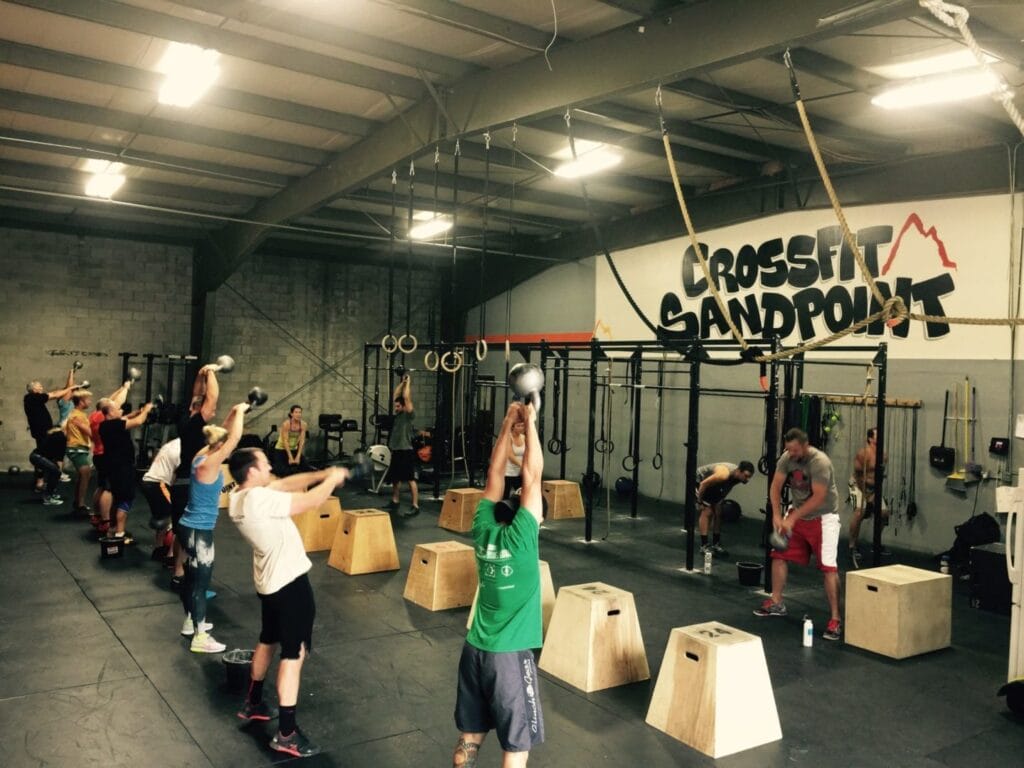We’ve done a handful of variations of the 40 Burpee, 60 KB Swing, 80 Wall Ball workout over the last few days, and we’ll probably do a few more over the next few weeks. We’ve done 10 Rounds of 4-6-8, 1 round of 40-60-80, 10 Rounds with 1 minute of work 1 minute of rest. I’ll probably spice it up a bit over the next few weeks with some substitutions, variations of rest, reps, weight, etc. Why am I loving this prescription, what does it matter and what should you be getting from this?
For one, it’s a great tester workout. The skills required for those movements are low, meaning that you can get some valid information from a group as large as our gym without having to factor in all sorts of factors like scaling weights, bands, half reps, limitations, etc. Additionally, you can learn a lot personally from the variations. In other words, although something like Fran can be an interesting test, for the most part, it just tells you how good you are at doing Fran. While thrusters are limited greatly by wrist mobility, shoulder mobility, thoracic mobility, strength, and skill, and doing pull-ups RX’d is not possible for 80% or more of our members, the validity of that test for the group is impossible to determine. On the other hand, I can get almost anyone that walks in the door doing a decent burpee, kettlebell swing and wall ball in only a few minutes. This means that this test is a better representation of some ideas of general fitness rather than whether or not someone can do a thruster or pull-up or not. For another example, if I organized a competition between you and someone else to do 30 muscle ups for time, and they can do 10 unbroken muscle ups, while you can’t do one, it’s not a valid comparison other than for examining muscle-up proficiency.

I don’t seem to recall ever competing in the Olympics, but that’s definitely my rear profile.
Yet, although the movements are fairly simple, they fall into the category of functional, mixed modal conditioning that I wholeheartedly believe in. Rather than just running or rowing (single modality), in this particular workout we are squatting and vertically pushing (wall balls), bending and lifting (kettlebell swings), and crawling, pushing and jumping (burpees). Combine all this together to move at a speed where we would call it conditioning, and you’ve got a recipe for a functional, effective workout that will demonstrate an ability of someone to move in ways that humans should be capable of to be “fit”.
For two, I like it because it’s difficult, but not particularly abusive to the body. Though you’d probably hate it, you could do this workout everyday for a week and probably be ok. You might be a little sore, and I’d have some concerns about your shoulders, but for the most part it’s not going to break you like something like pull-ups, box jumps, toes to bar, or heavier lifting would.

For three, combined with the points above, I like the infinite variability of it, and the lessons that can be learned from the variety. If you’ve done all three of the variations we’ve done, you’ve hopefully learned something about yourself, about muscular endurance, about pacing, and probably more. You’ve probably learned a little about how much harder it is to do it 40 Burpees, 60 Kettlebell Swings and 80 Wall Balls than it is to do 10 Rounds of 4-6-8. I’d imagine your time was 10-15% better, and that’s with a lot more transition time between movements. Then, when we did it with 1 minute on, 1 minute off, you learned how much those rest periods help you accumulate a greater volume of work at a higher intensity. So, if you do a minute on and a minute off, and sitting still is a 1 and sprinting is a 10, you can work at an 8 for a minute for 8 rounds instead of a 5 for 10 minutes. (Wait, you thought rest periods were just my way of being nice?)
If and when we do different variations of it in the future, you should learn even more. For example, when we swap the wall balls for heavy front squats or thrusters with fewer reps, and add some rest, you’ll get an entirely different workout, and recognize how different the burn from an anaerobic piece is from an aerobic piece and why you need longer rest periods for repeat efforts. For example:
10 Rounds of 4 Burpee, 6 KB Swings, and 8 Wall Balls is largely an aerobic workout. If we did 1:1 work to rest, you’d be totally fine to continue for at those intervals.
However, if we did
4 Rounds of: 2 Minutes for 10 Heavy, Unbroken Thrusters, then AMRAP of 6 Burpees and 8 KB Swings in the remaining time, and rested 6 minutes between rounds, it would be a totally different workout and response with similar, albeit heavier movements.
or
6 Rounds of: 7 Heavy Touch and Go Power Cleans, 10 Burpees and 12 Wall Balls AFAP w/ 3:00 rest, it also would be a completely different workout with a different response with similar movements.
So, as you encounter different variations of this workout, know that I’m not just being lazy, I’m trying to implement some education through experience (and pain) that should teach you a lot about pacing, how to approach different workouts, and what different schemes feel like.

